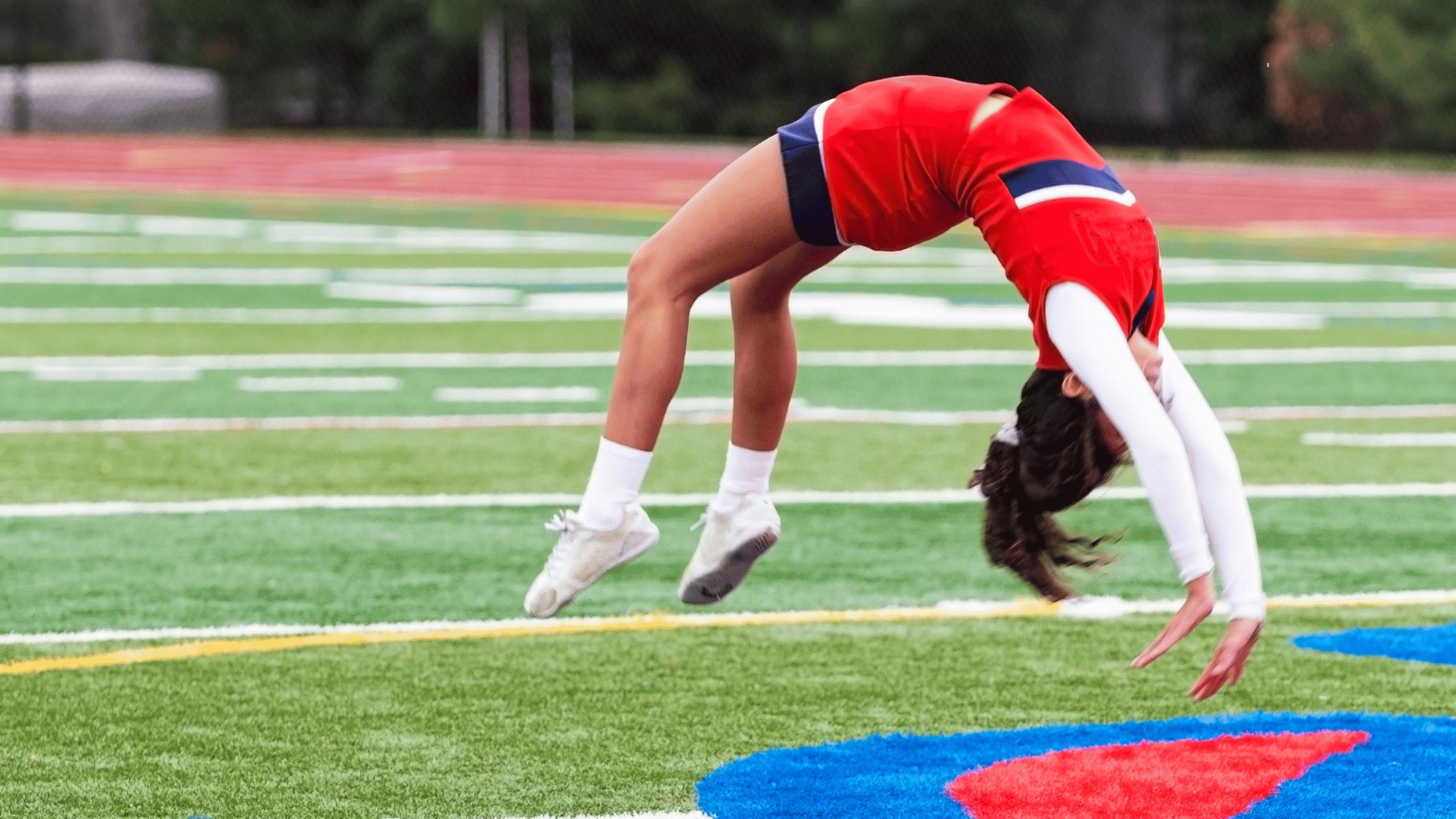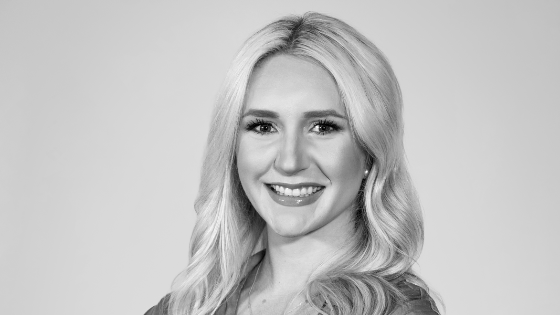The Roles of Cheerleading: Physical Demands and How To Choose the Best Role For You

Licensed Physical Therapist, PT, DPT // EW Motion Therapy Liberty Park
Cheerleading is a captivating blend of athleticism, artistry, and teamwork. Each athlete, whether a base, flyer, backspot, or tumbler, brings unique skills to the table, contributing to the overall success and flair of the team. Tailored training and rehabilitation are crucial for each role to succeed in their unique skill set - we love helping our cheerleaders at EW Motion Therapy keep their bodies strong and able to withstand the skills necessary to excel in their sport. Our physical therapy might not be right for you. However, you can still review this guide as we delve into the specific skills required for each position, the physical demands these athletes face, common injuries, and how physical therapy plays a crucial role in their health, recovery, and performance enhancement. With this information, you can choose which of these roles might be best for your cheer career.
The essential athletes of a cheer team
Bases
Bases act as the cornerstone of cheer stunts, embodying strength and stability. They require immense lower body strength to lift and support their teammates, upper body and core stability to ensure a steady base, and synchronized timing to execute complex stunts and tumbling seamlessly.
Constantly lifting and supporting flyers, bases are prone to wrist sprains, lower back strains, and shoulder injuries. Bases lacking in strength and proper timing can lead to unstable stunts and increased risk of collapses. This not only jeopardizes the safety of the flyers but also increases the likelihood of injuries for all members involved, including strains and sprains from improper lifting and catching techniques. A regimen focusing on core strength, flexibility, and proper lifting techniques can significantly mitigate these risks, enhancing their endurance and performance while preventing common injuries.
Flyers
Flyers are the epitome of grace and balance, positioned at the pinnacle of cheer stunts. This role demands exceptional core strength for stability in the air, flexibility for executing various poses, and precise body control to maintain form while being tossed and caught, as well as while tumbling.
Due to their aerial roles, flyers are at risk for ankle and wrist sprains, and other impact-related injuries from falls or imbalanced landings. Flyers with insufficient balance and core strength may struggle to maintain correct positions in the air, leading to falls and failed stunts. This lack of control increases the risk of mid-air collisions and injuries upon landing, such as sprains and fractures. Targeted exercises that improve balance, flexibility, and core strength, along with safe landing techniques, can greatly reduce injury risks and aid in quicker, safer recoveries.
Tumblers
Most members of a cheer team are tumblers, who provide the wow factor with their explosive flips, rolls, and acrobatics.They must exhibit excellent agility, strength, power, and speed, along with precise timing and body awareness to execute their routines flawlessly.
Tumbling's high impact often leads to knee injuries, ankle sprains, and back strains. Tumblers lacking in technique and body awareness face a higher risk of incorrect landings and misjudged acrobatics. These can result in severe injuries like torn ligaments, concussions, or broken bones, significantly impacting their ability to perform and compete. Focusing on coordination, joint strength, and proper form can help tumblers reduce their injury risk and enhance their tumbling capabilities.
Backspots
Backspots ensure the safety of the flyer, particularly during complex stunts and dismounts. They are also the “operators” of stunts, as they determine the direction of the stunt with their strength and hand positioning and give verbal orders to bases. They need strong observational skills to anticipate movements, robust arm and shoulder strength to catch and support flyers, and quick reflexes to act swiftly to ensure their teammates' safety. Many backspots also tumble, requiring body awareness and joint strength.
Common injuries include low back pain, as well as shoulder strains and muscle sprains from catching and lifting duties. Backspots with inadequate strength and slow reaction times may fail to catch or stabilize flyers effectively. This can lead to increased accidents and injuries, compromising the overall safety of the stunt group. Strengthening and flexibility exercises tailored to backspots can prevent injuries and improve their reaction times and effectiveness in their protective role.
Physical therapy and guided training: what each role needs
Incorporating physical therapy into a cheerleader's regimen is not just about addressing injuries—it's about enhancing performance, ensuring longevity in the sport, and maintaining overall physical health. For each role within a cheer team, physical therapy offers tailored solutions:
- Bases benefit from strength training and stabilization exercises, focusing on core, legs, and arms to support the demands of lifting and catching. Additionally, coordination and timing exercises can improve their ability to work synchronously, ensuring safer and more stable stunts.
- Flyers can benefit from physical therapy that emphasizes core strengthening and balance exercises. This can help them maintain correct body positions and enhance their stability in the air, reducing the likelihood of falls and mishaps.
- Tumblers are supported with agility training, joint fortification exercises, and techniques that promote safe landings, crucial for their fast-paced and high-impact routines. Tumblers should focus on improving their technique through guided training and physical therapy. Enhancing flexibility and body awareness can lead to safer, more controlled acrobatics, minimizing the risk of injury.
- Backspots require training that focuses on upper and lower body strength, dynamic functional strength, and quick reflexes. Physical therapy can help develop these skills, ensuring they are prepared to catch and stabilize flyers, reducing the risk of falls and injuries.
Choosing the right position for you
Choosing the right position in a cheerleading squad is pivotal to both your fulfillment and the team's success. This decision should be based on personal strengths, preferences, physical attributes, and skills. There are several factors to consider when determining which cheerleading position might be the best fit for you, guiding you towards a role that not only suits your abilities but also enhances your enjoyment and contribution to the team.
Physical attributes
Each position in cheerleading has unique physical demands. Assessing your body type, strength, flexibility, and endurance is crucial. For instance, bases generally require robust strength and stability, making this position ideal for individuals with strong lower and upper body strength. Flyers, on the other hand, are often lighter and more flexible, requiring good balance and core strength. If you have a background in gymnastics or are particularly agile, tumbling could be your calling. Backspots need to be strong as well but also need good height and arm length to effectively protect and assist flyers.
Skills and experience
Consider your existing skills and athletic background. If you have experience in gymnastics or dance, you might be well-suited to be a flyer or tumbler. If you have a history in sports that require strength and teamwork, such as basketball or volleyball, you might be more comfortable as a base or backspot.
Personality and teamwork style
Cheerleading positions also demand different personality traits and teamwork styles. If you enjoy being in the spotlight and can handle pressure well, you might be a flyer. If you prefer supporting roles and have a protective instinct, consider being a backspot. Bases need to be dependable and patient, as they form the foundation of stunts.
Trying out different roles
Participation in workshops, camps, or tryouts can provide firsthand experience in various positions. This exposure is invaluable as it allows you to gauge where you feel most comfortable and effective. Feedback from coaches and teammates can also offer insights into where your abilities can be best utilized.
While personal preferences are important, the ultimate decision might also depend on the team's requirements. Open discussions with coaches about where your skills could be most beneficial for the team’s dynamics and success can lead to a fulfilling compromise between personal goals and team needs.
Once you’ve identified a position, focus on honing the specific skills it requires while maintaining flexibility. Cheerleaders often switch roles as they develop new strengths or as team configurations change. Embracing continuous improvement and adaptability can open up new opportunities and enrich your cheerleading experience.
Remember, the best position for you is one where you can grow, enjoy the sport, and contribute positively to your team's spirit and success. Whether you’re soaring high as a flyer, anchoring stunts as a base, igniting the crowd as a tumbler, or safeguarding your teammates as a backspot, your role is crucial. Embrace it with enthusiasm, dedication, and a continual desire to improve.
Each member of a cheerleading squad faces unique physical challenges and risks. By understanding the specific skills and demands of bases, flyers, tumblers, and backspots, teams can adopt more targeted training and rehabilitation strategies. Physical therapy is a vital component of this approach, offering preventive measures and customized treatment plans that address the distinct needs of each athlete. Through dedicated physical therapy, cheerleaders can achieve higher performance levels, reduced injury rates, and a longer, more enjoyable participation in the sport they love. This holistic approach not only elevates individual athletes but strengthens the entire team, paving the way for success both on and off the mat. We love helping our cheerleaders at EW Motion Therapy keep up with the demands of their sport and role on the team, so they can pursue their goals and prevent injury. If you want to learn more about how physical therapy can help you, click the button below to download our answers to 20 frequently asked questions.


